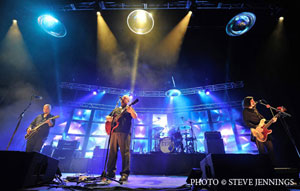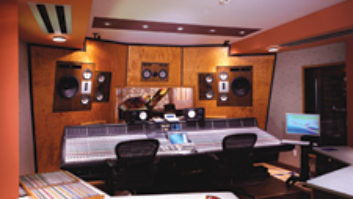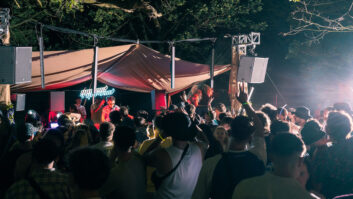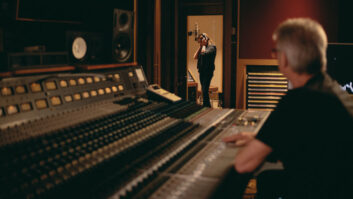
Photo: Steve Jennings
The Pixies—Black Francis, vocals/guitar; Joey Santiago, guitar; David Lovering, drums; Paz Lenchantin, bass—performed at the Fox Theater in Oakland, Calif., in early March. The band carries a d&b audiotechnik J-Series P.A. provided by Eighth Day Sound, based in Highland Heights, Ohio.
“I’m using an Avid Profile, which has been my preferred digital console since I started doing live gigs around 2008,” says Pixies front-of-house engineer Miles Wilson, who got his audio start as an assistant engineer at Sound City in Van Nuys in 2001. “I’m a pretty big believer in not over-processing, so quite a few of the 26 inputs I have on the Pixies have no EQ or compression on them. The ones that do get processing are mostly handled with stock DigiRack plug-ins plus a few McDSP plug-ins. I also have no problem using the in-line processing. In fact, I love the gates and find them very ‘usable’ compared to a lot of other digital desks. “For my external rack gear, I have a BlueTube stereo mic pre by PreSonus that I use for ambient mics. I use an old Lexicon PCM 42 delay unit for Charles’ [Black Francis] vocals, a PCM 60 for drum reverb, a Yamaha SPX2000 for reverbs, and an old Valley People Dyna-Mite compressor that gets used on a drum subgroup.”

Front-of-house engineer Miles Wilson
Photo: Steve Jennings
“I’ve been using a Yamaha PM5D for the last nine years,” says monitor engineer Matt Jones. “I’ve tried every board out there and this one suits me. The reverbs just sound authentic to the Pixies sound. I don’t use anything external. All the vocal microphones are Shure Beta 58s, except David’s, which is a B56.

Monitor engineer Matt Jones
Photo: Steve Jennings
“I did a lot of research about what wireless system the band would buy,” he continues. “I chose to go with Sennheiser, as I had a close connection to them and I think the RF is better. We have 4 channels of 2000 Series for the band, with a helical aerial, and 4x G3 for the crew and me with an omni. Each has its own four-way DA. I bought the new TTI Scanner to assist me also. As for ear molds we went for the JH Audio JH16s. They sound amazing. It was a big thing moving from wedges to ears for them, and after the initial shock, it appears to have worked really well.”
“Charles [Black Francis] uses two mid-’60s Vox AC 30 ‘piggyback’ combos,” says guitar tech Duncan Swift. “These were the forerunners before amp and speakers were combined in the same cabinet. The white combo is an AC 30 reissue combo—a much later combo—to be used as a spare, using the external out to drive either forward speaker cab. We have Shure Beta 57 and SM57 microphones on them.”
Guitarist Joey Santiago uses a Marshall 2205, 50-watt JCM 800 lead series head into a 4×12 slant cabinet, paired with a vintage 1960s Fender Vibrolux—a 40-watt CVR, with 2×10-inch speakers. They’re also miked with the Shure Beta 57 and SM57.
“David Lovering plays on a ’70s Jasper shell Gretsch USA custom drum set,” says drum and bass tech Paul “Chumpy” Knowles. “Microphones consist of a Shure Beta 91 and Beta 52 on kick, SM57 on snare top, Sennheiser 441 on snare bottom, Sennheiser 421 on rack and floor toms, Shure SM81 on hi-hat and ride cymbals, and AKG 414s on overheads.”
Bassist Paz Lenchantin uses an Ampeg SVT-CL Silver Face in conjunction with a classic Ampeg 8×10 cab. It’s miked with a Sennheiser 421 and a Radial J48 DI.




